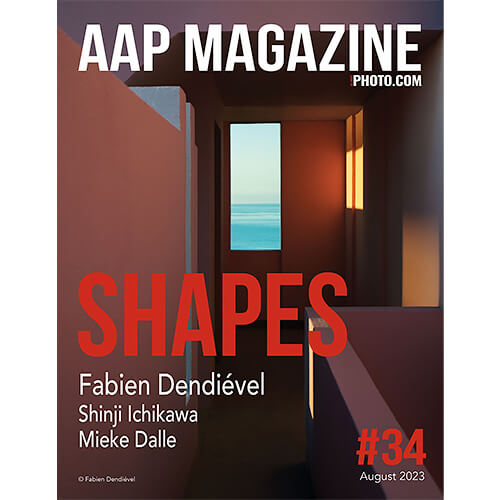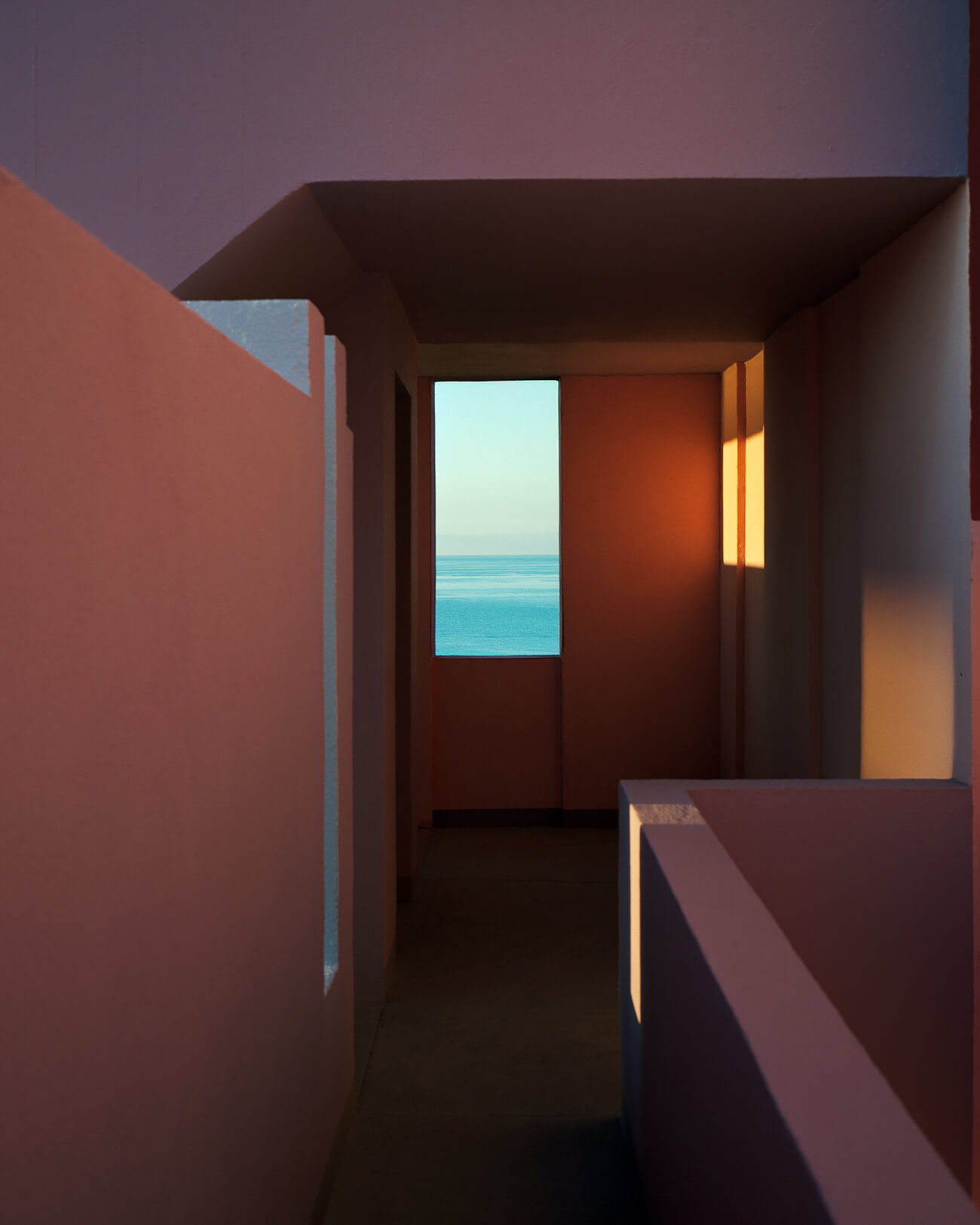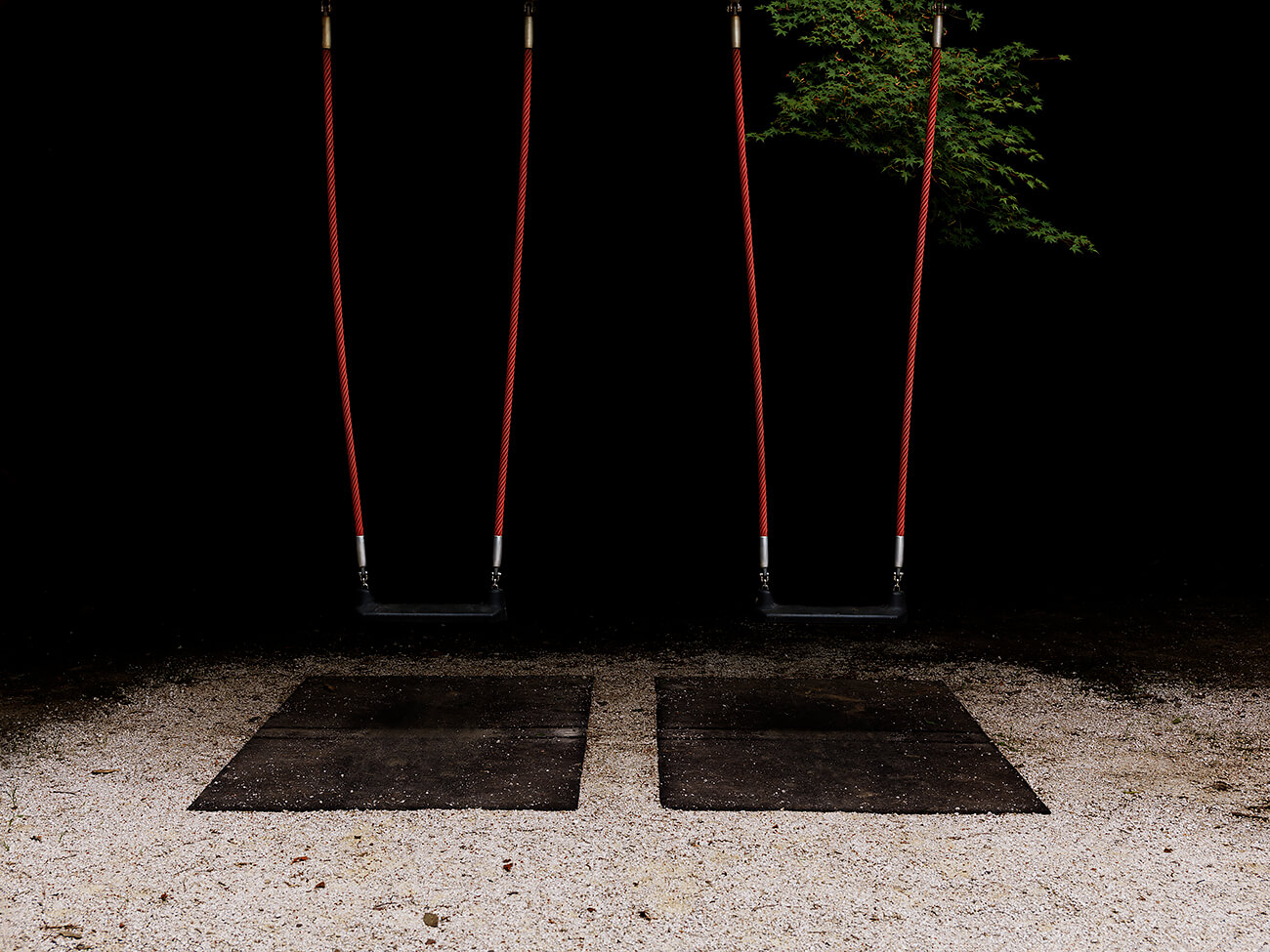In the 34th edition of AAP Magazine, we sought submissions that delve into the realms of composition and form as integral elements of photographic aesthetics. Whether embracing pure visual formalism or in service of a thematic narrative, we were eager to discover artworks that embraced these fundamental aspects.
The appreciation of shape and form stands as a cornerstone in the realm of photographic composition. It possesses the transformative power to elevate even the most ordinary subject into a masterpiece. Whether embracing geometric precision, organic fluidity, positive vitality, or negative space, the interplay of shapes enriches a photograph's overall aesthetics and evokes its unique vibes.
We chose twenty-five photographers for their different approach to the idea of Shapes. They come from twelve different countries and four continents. Their work is diverse: architecture, mixed-media, still life, abstractions... and use different techniques & perspectives but each one showcases a unique point of view.
The Winner of AAP Magazine 34 Shapes is Fabien Dendiéval (France) with the project La Muralla Roja
I feel sometimes photography as a kind of quest, a treasure hunt. It is a long term work that takes time and is full of pitfalls, constraints and frustrations but to find myself in front of a scene like this one makes me enthusiastic and rewards me for all my efforts.
www.fabiendendievel.com
@fabien_dendievel
The Second Place Winner is Shinji Ichikawa (Japan) with the project Symbols for Rhythm
I was born in Shimane Prefecture, Japan, and I currently own and operate a photography studio in my hometown.
This series, Symbols for Rhythm, explores the beauty and rhythm of the everyday.
Rhythm brings vitality to our lives and has the power to change our perspective. At the same
time, the title Symbols helps us perceive rhythm as a visual element. Through photography, we
discover and explore rhythm and beauty from a new perspective.
www.shinjiichikawa.com
The Third Place Winner is Mieke Dalle (Belgium) with the project Egg-serie
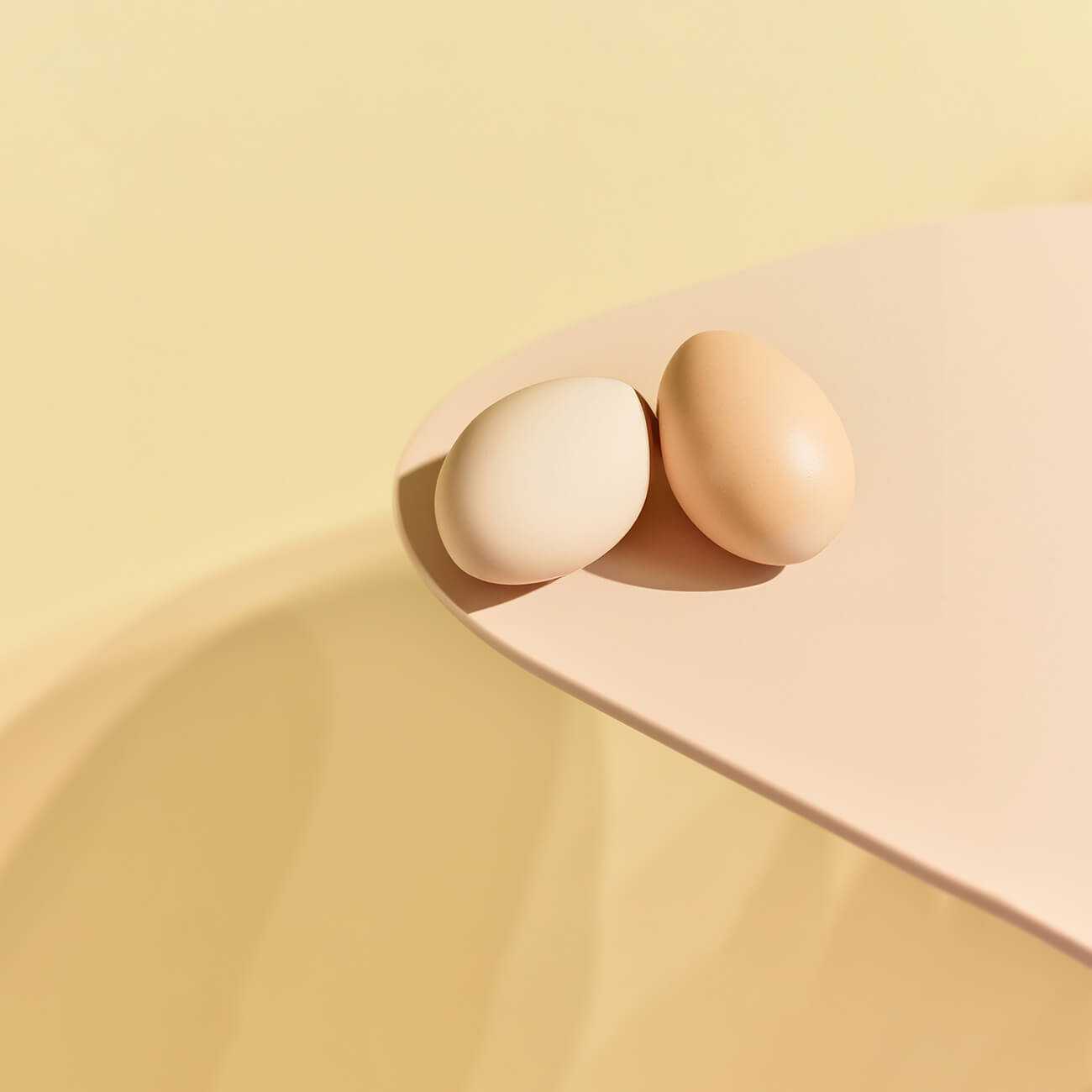
Pastel duo eggs © Mieke Dalle
As a photographer and graphic designer, I like to bring simplicity to my work.
In this serie the egg as a starting point, because this shape is one of the most
beautiful shapes that occur in nature, in my opinion. Simple yet strong.
The beginning of life, the chicken or the egg…
www.mien.be
@m.i.e.n.be
All about Mieke Dalle
Merit Award's Gallery
Gjert Rognli (Norway)
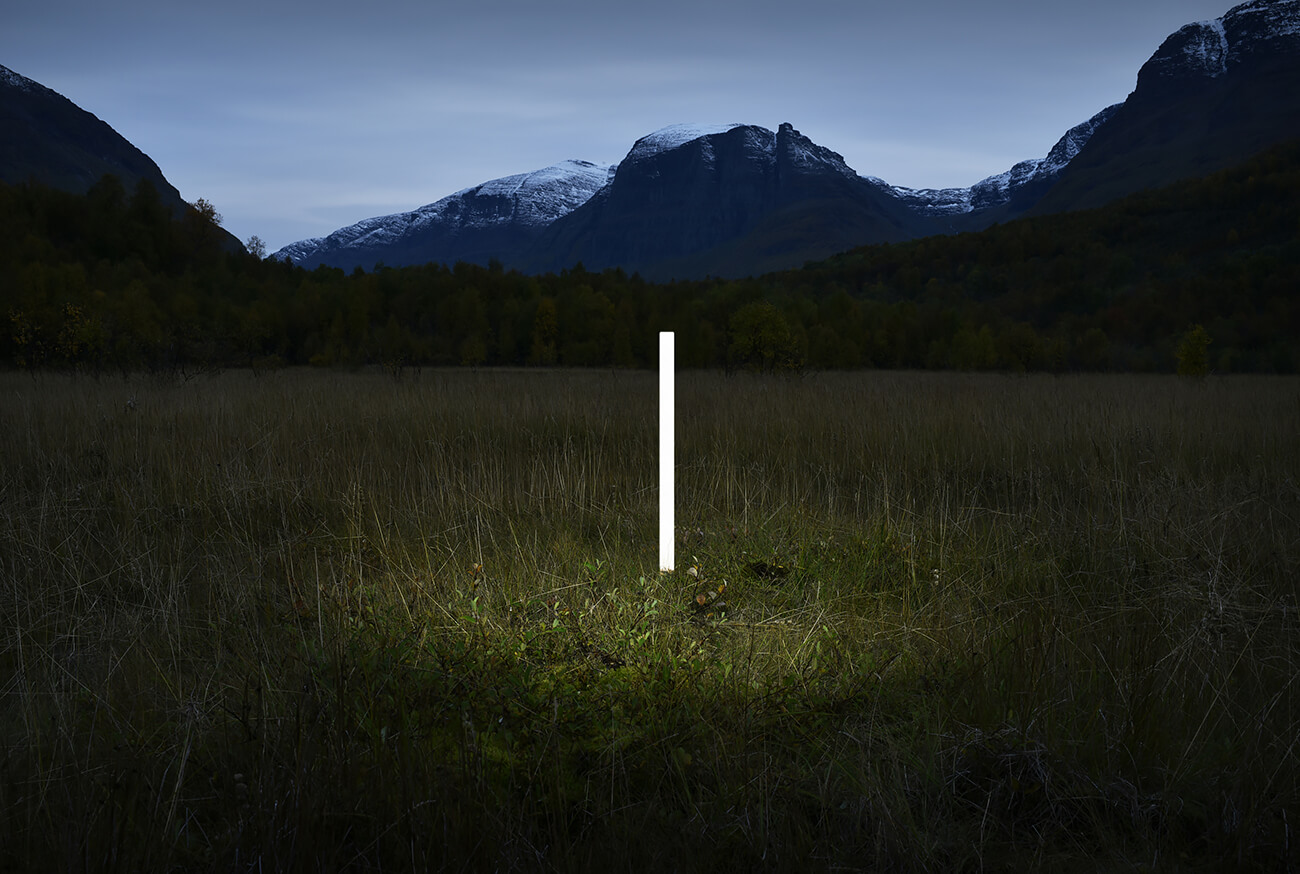
It`s all around you - Buot leat du birra IV © Gjert Rognli
With the photography project «It`s all around you - Buot leat du birra» Gjert Rognli draws in references from his affiliation to the Arctic North, to light, darkness and the seasons. In this project, he uses fragments from the intangible cultural heritage from his Sámi Indigenous background. And he invites us on a mythological journey into deep forests and over misty landscapes. He illuminates nature with LED lights and creates light installations in the landscape.
Fern Nesson (United States)
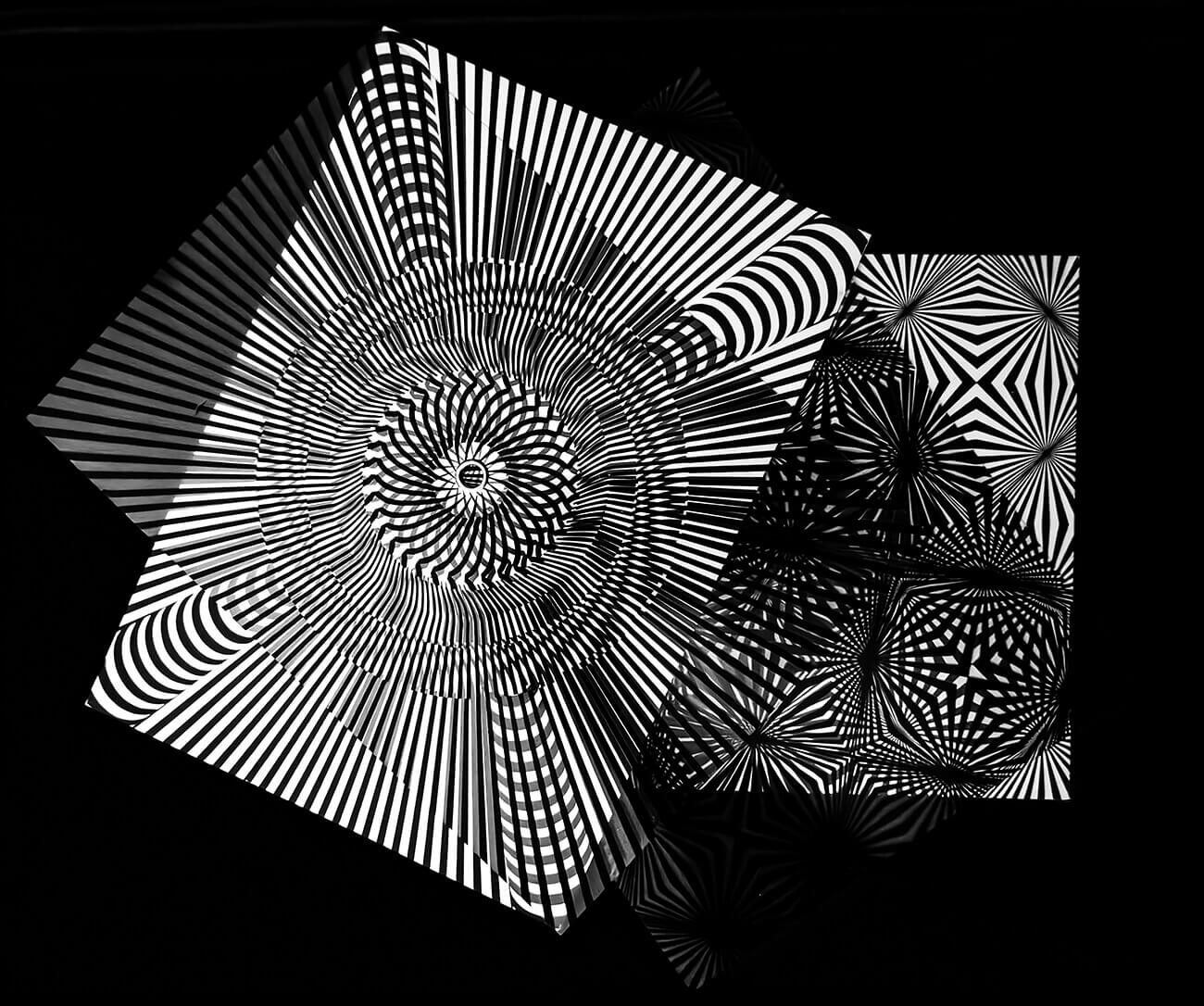
OP! from the series E=mc2 © Fern Nesson
Prior to 1905, physicists credited Newton’s description of the universe as a
clockwork machine, in which time flows steadily forward through space that is an
unvarying, regular grid. Not so with Einstein. When scientific experiments
showed flaws in Newton’s description, Einstein fearlessly thought his (and our)
way out of the box. It was not light speed that varied; it was time and space. In
fact, light is a constant, the fulcrum around which the universe balances, or, as
Einstein put it, E=mc².
As ravishing, brilliant, evocative and world-changing as Einstein’s insight
clearly was, I can’t help but wonder whether he would have come to it even
sooner if he had been a photographer. Photographers know that everything
revolves around light. The amount of natural light is not in our control. If there is
no light, there can be no photo. But we can play with time; we control the shutter.
Light is our constant; it is time that is relative. Mass is energy instantiated and it
is the speed of light that determines which form we see.
My non-representational photographs capture that energy and transmit it to
you. Roland Barthes asserts that a photograph is a witness [to] what has been.
Every image is an image of death. But Barthes is wrong. As Einstein showed us,
the equation runs two ways: energy can transform into mass -- light and a
camera produce the photograph -- but mass can transform into energy as well.
I use my camera to create life and to defy death. My goal is make living
works of art that remind us of our own transcendence. They capture the moment
when mass becomes energy. In that moment, we know ourselves to be infinite,
inextricably a part of the universe. We perceive that, when we die, we will merely
change in form. Nothing is ever lost. The energy of those we loved exists forever
all around us. And we will too.
All about Fern Nesson
Gavin Libotte (Australia)
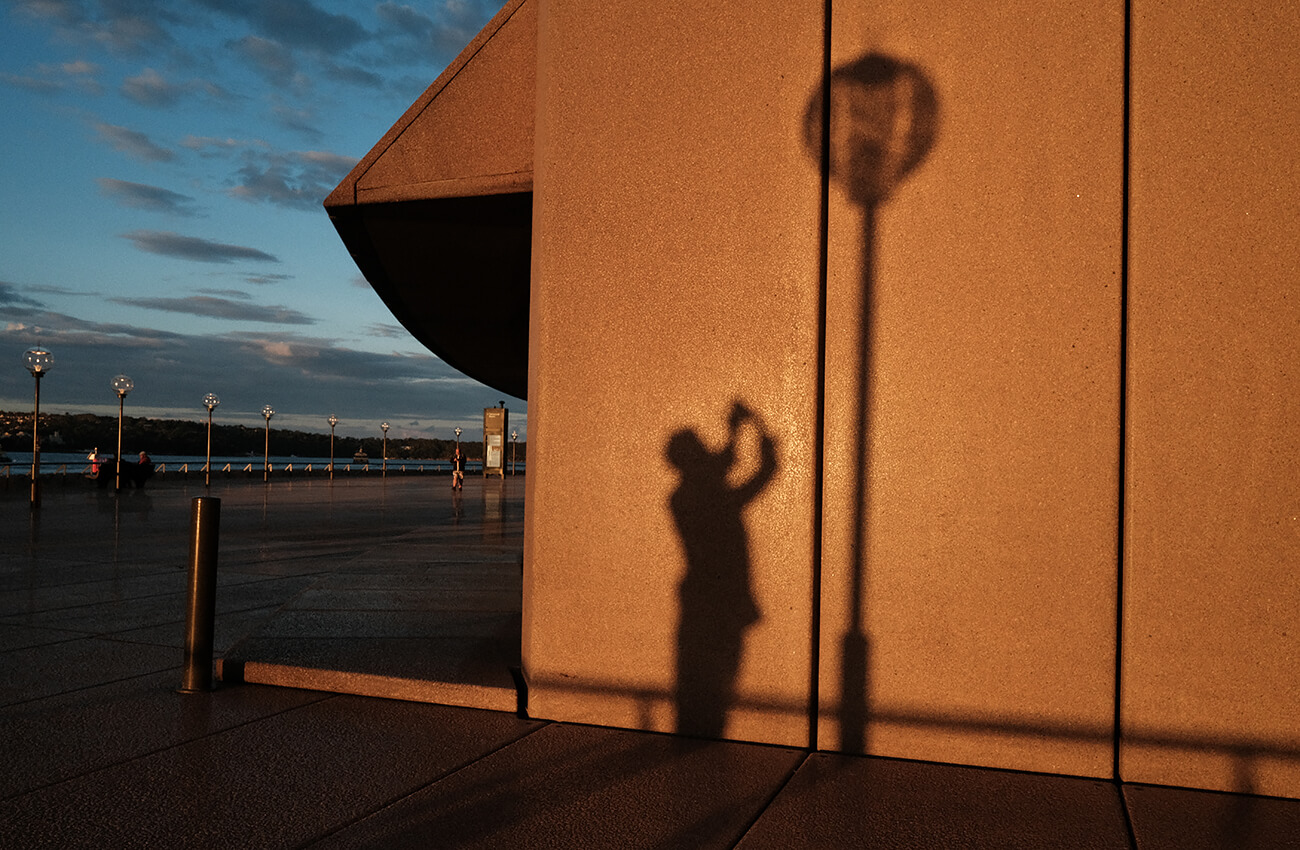
See The Light from the series Street Opera © Gavin Libotte
Opera: a staged drama set to music. When I play music I visualise things, and when I make images I often hear music. They compliment each other, sharing elements such as harmony, balance, rhythm, and repetition. Both express thoughts, emotions, stories, views, ideas, and nuances within human life.
Opera is a staged drama set to music but Street photography is an unstaged view of the world that is quietly dramatic. The backdrop of the Sydney Opera House showcases this juxtaposition. Simple scenes in peoples’ lives become accentuated and elevated to reveal the ordinary artistry of the world and its myriad stories. The never-ending drama of the personal life is presented in sharp relief.
All about Gavin Libotte
Vladimir Antaki (France/Lebanon/Canada)
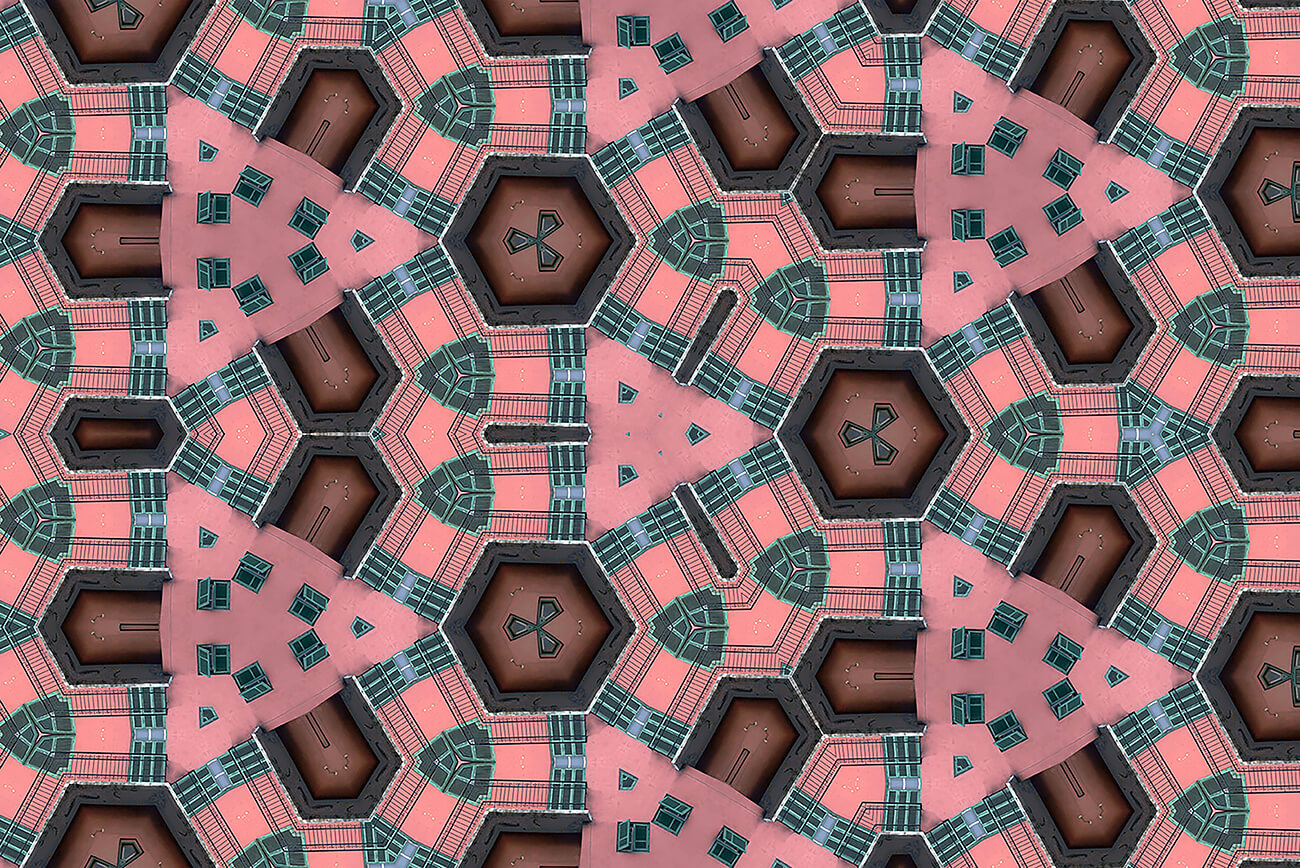
'Beyrouth, mon amour' (Beirut, my love) © Vladimir Antaki
Beirut, like people, carries scars of its past. As modernization erases uniqueness and covers historical wounds with glass skyscrapers, photographer Antaki offers a visual tribute to this resilient city. His digital artistry elevates homes from diverse backgrounds to equal standing, creating a cultural mosaic in a city of 18 religious sects.
Antaki's work not only recalls the past but also reflects the present and looks to the future. It celebrates the intrinsic beauty of these homes and fosters unity by bringing the scars of history to life.
Liliane Schwab (Switzerland/Canada)
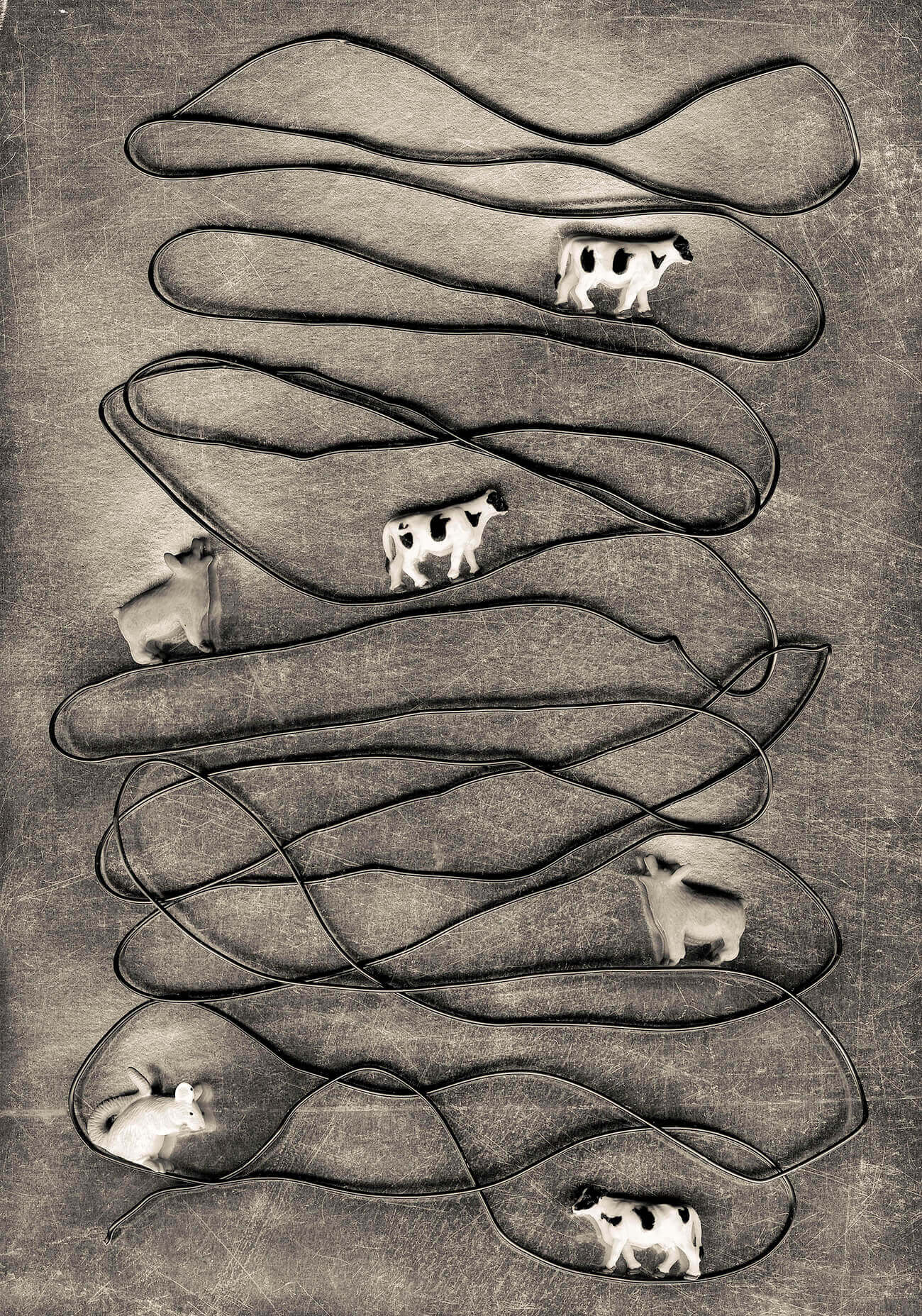
The Wire © Liliane Schwab
Playing with old wire and objects found in my home.
It’s always a game to discover what you can create.
An other visual adventure with some frustration on the way. The wire has it’s own stubborn personality. It does not always end up as planed. I surrender to my wire and work till it looks good.
I never analyze my work, it’s just what it is. The end result.
Still an ongoing project..
Giuliano Ottaviani (Italy)
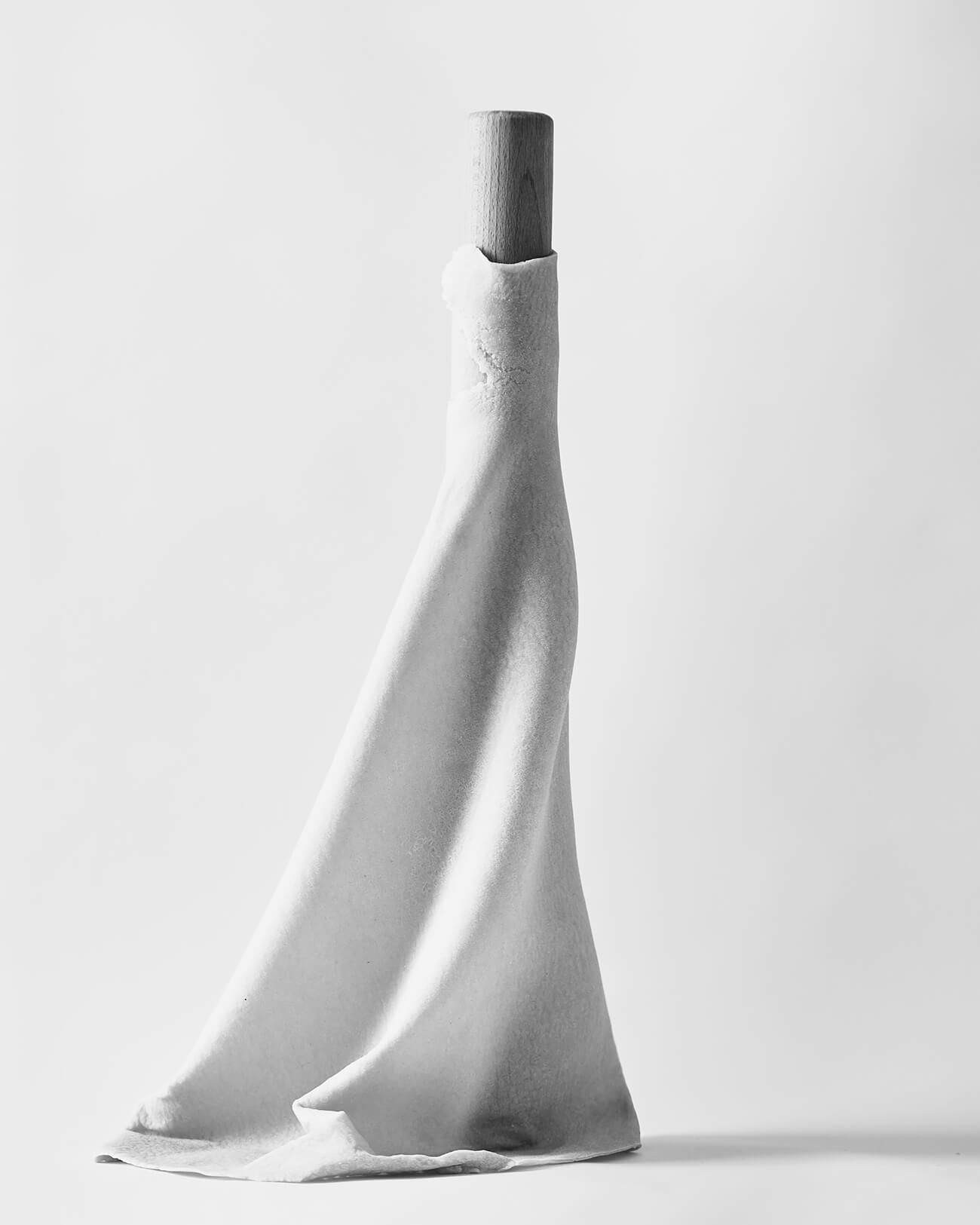
Grace’s Graceful Skirt from the series 'Eggs, Flour and Perspective' © Giuliano Ottaviani
This is the first B/W series I’ve done since 2009 and it is maybe my most personal and instinctual work. I always wanted to try a series about the simplicity and elegance hidden in the shape of egg pasta. The making of egg pasta is a family tradition that I have learned thanks my mother’s harsh teachings. So everything in this series has been moulded by my hands and then shot, one photo per day.
I’m a photographer who normally works with colour, and I often do it on an intellectual level. So, as I wanted to really nourish the instinctual side of this work, I chose to remove the colours from the equation. That choice left me with my love of pasta making and my inner compulsion to explore the spatial potential and the texture of every single object I put my hands on.
Pasta is here deprived of its primary function (food) and rethought as a toy produced to create visual entertainment and stimulation for the imagination. Some photos are more evocative, others more abstract. It is important to understand that I’ve placed no hidden message in this series, just my personality and my inner child.
Lastly, I hope that the viewer will enjoy these images in the same way I enjoyed the process of making them.
All about Giuliano Ottaviani
Kevin Kinner (United States)
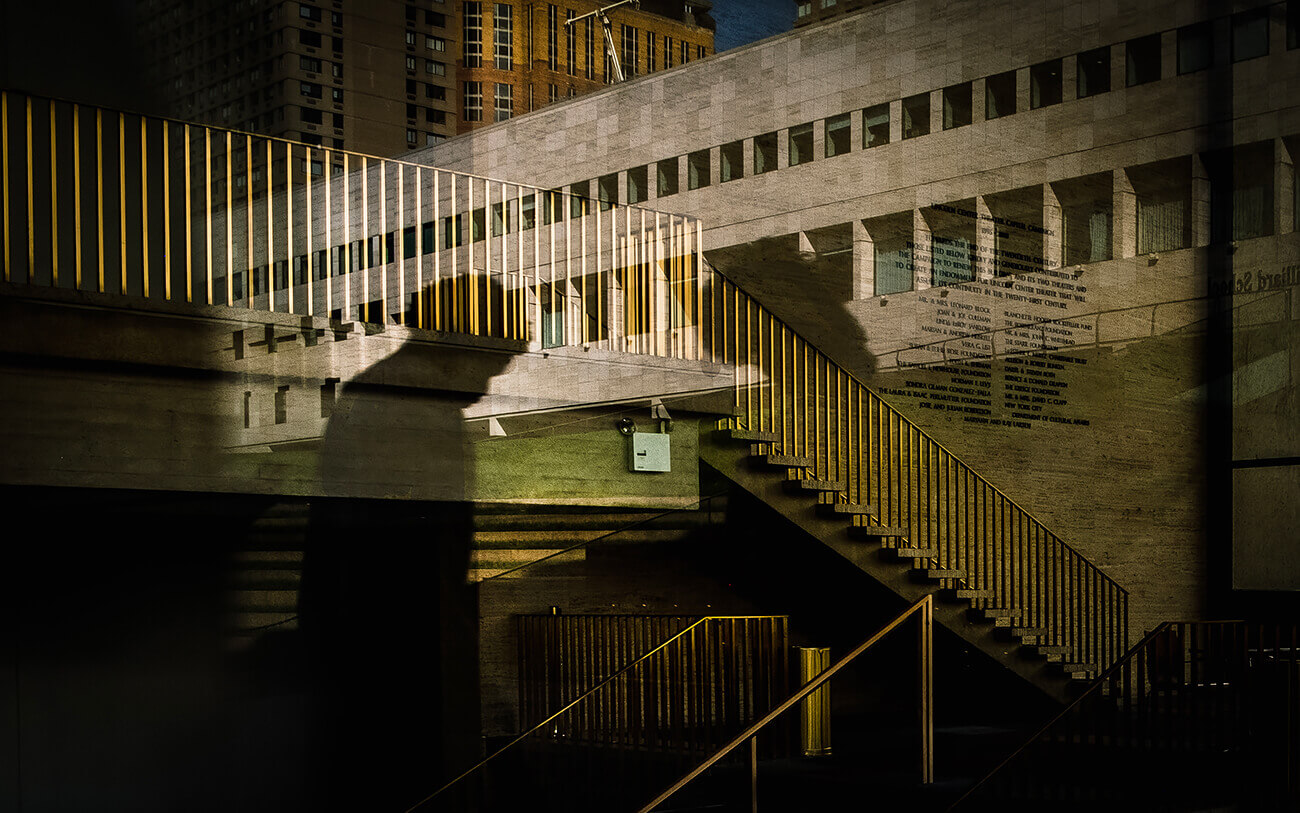
Reflection Montage © Kevin Kinner
This image was shot on the campus of Lincoln Center in NYC.
It is a reflection capturing the variety of architecture with light and shadows
defining the shapes. The silhouette of the man gives the image dimension
and a hint of mystery.
All about Kevin Kinner
Michel Daumergue (France)
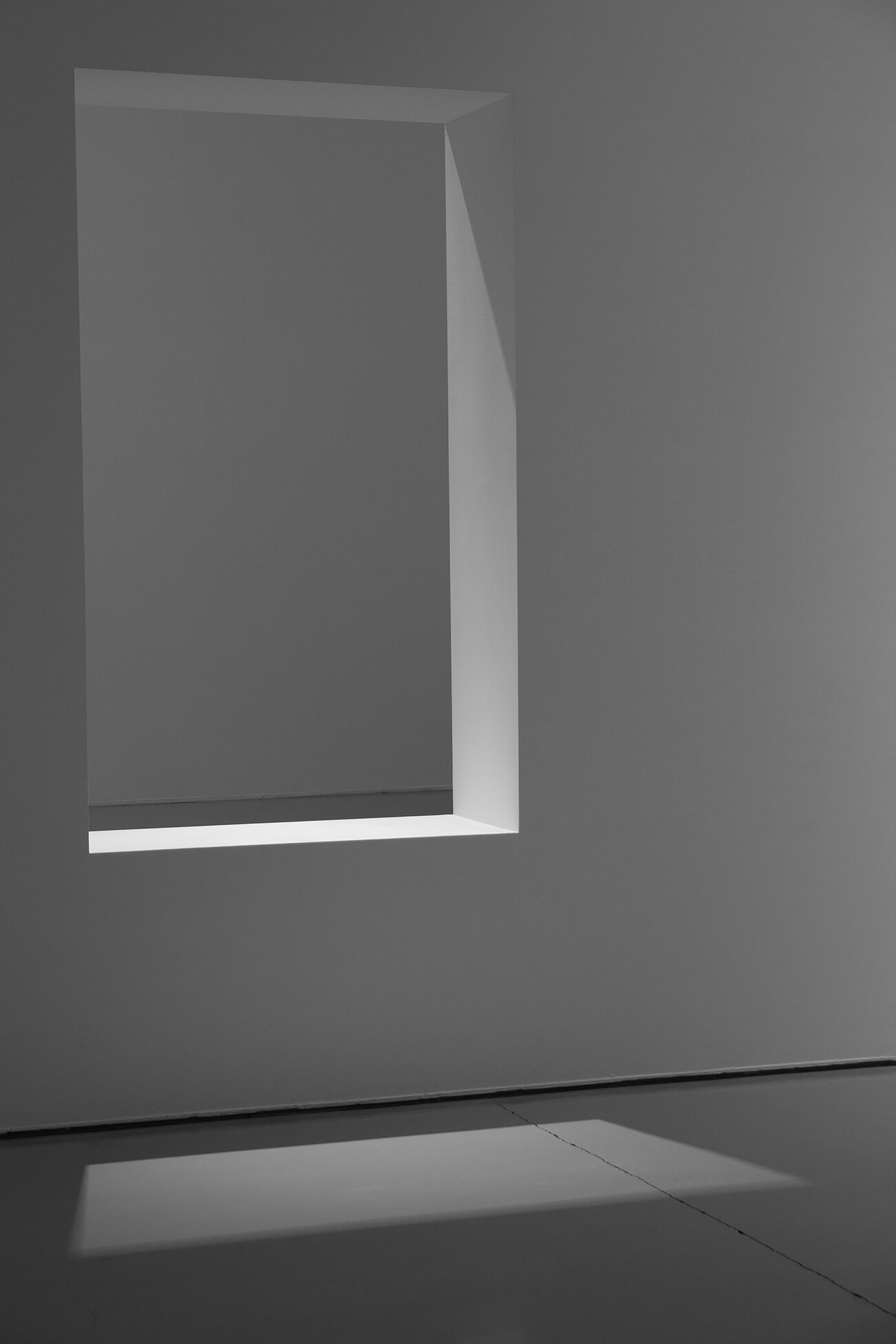
Le Consortium, Dijon from the series 'A Travers...' © Michel Daumergue
'The Frame Within the Frame' is the central focus of this series. Each of the three images displays something that is already framed (window, mirror, opening) and introduces a hint of uncertainty related to my own framing choices. These images teeter on the edge between object and abstraction...
All about Michel Daumergue
Jo Fields (United States
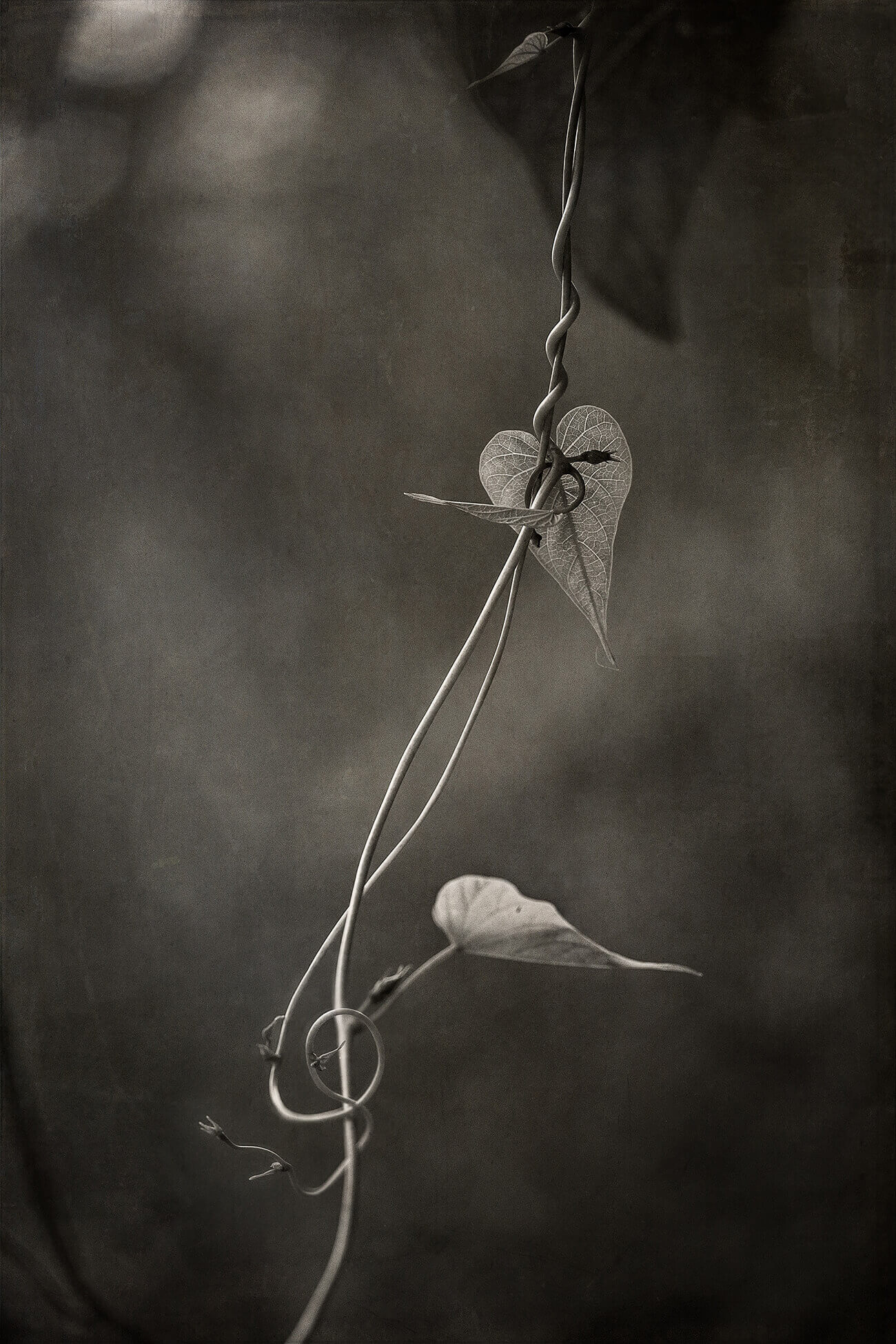
Chiave di Violino (Treble Clef) from the series 'Musica Notturna (Night Music)' © Jo Fields
Chiave di Violino (Treble Clef) combines my love of nature, photography and music into the series Musica Notturna (Night Music), an exploration of the Moonflower vine that only blooms at night.
All about Jo Fields
Emmanuelle Becker (France/United States)
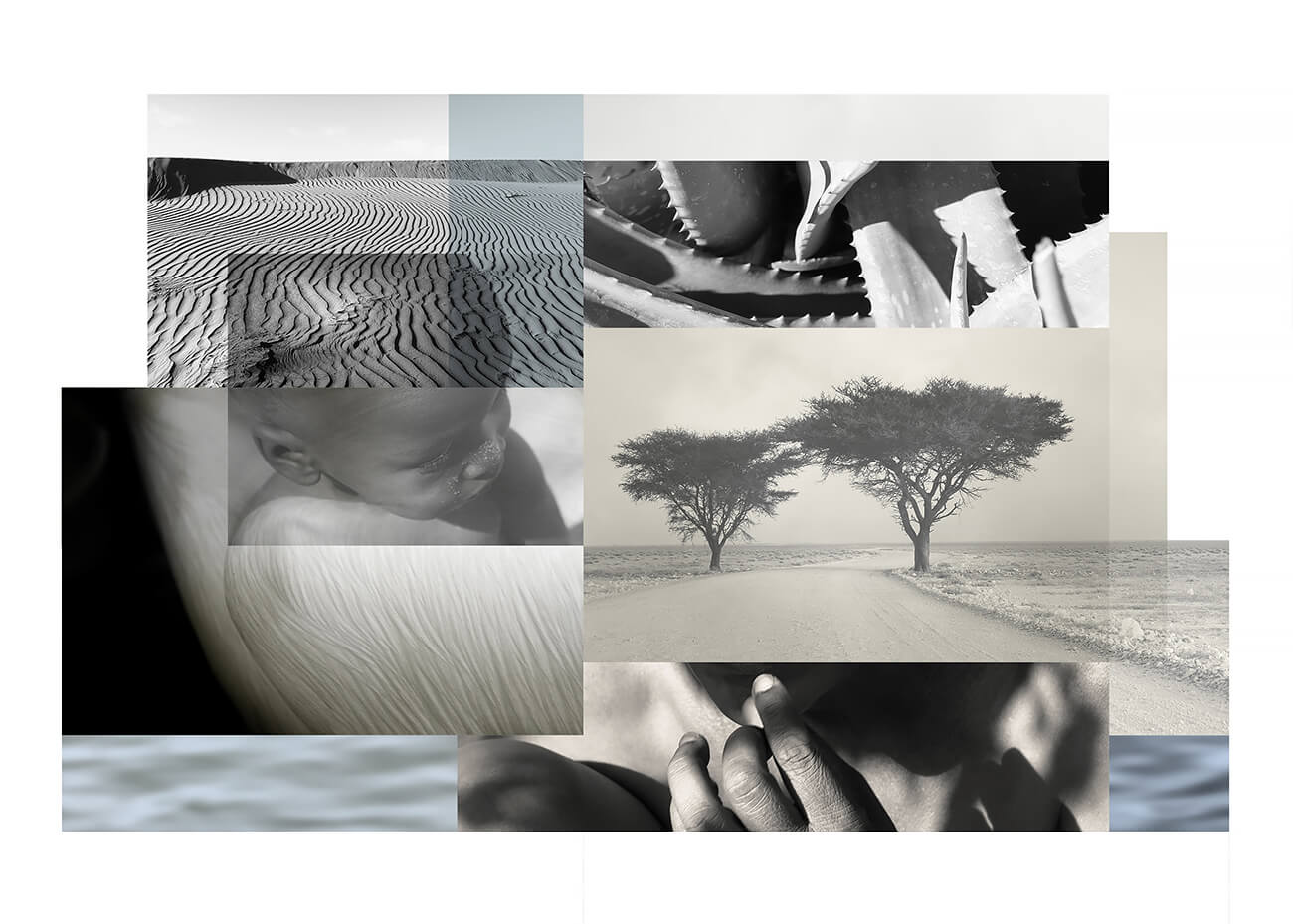
Reveries n°52 from the series 'Reveries' © Emmanuelle Becker
This photographic series, titled Reveries, is inspired by the musical genre. The images are dreamy and meditative, composed of memories and wandering thoughts, a kind of waking dream. Like reveries, which are imbued with improvisation and ambiguity, I explore textures and phrasing. With this photographic ensemble, I invite the viewer on an emotional journey filled with anticipation and uncertainty.
All about Emmanuelle Becker
Marcel van Balken (Netherlands)
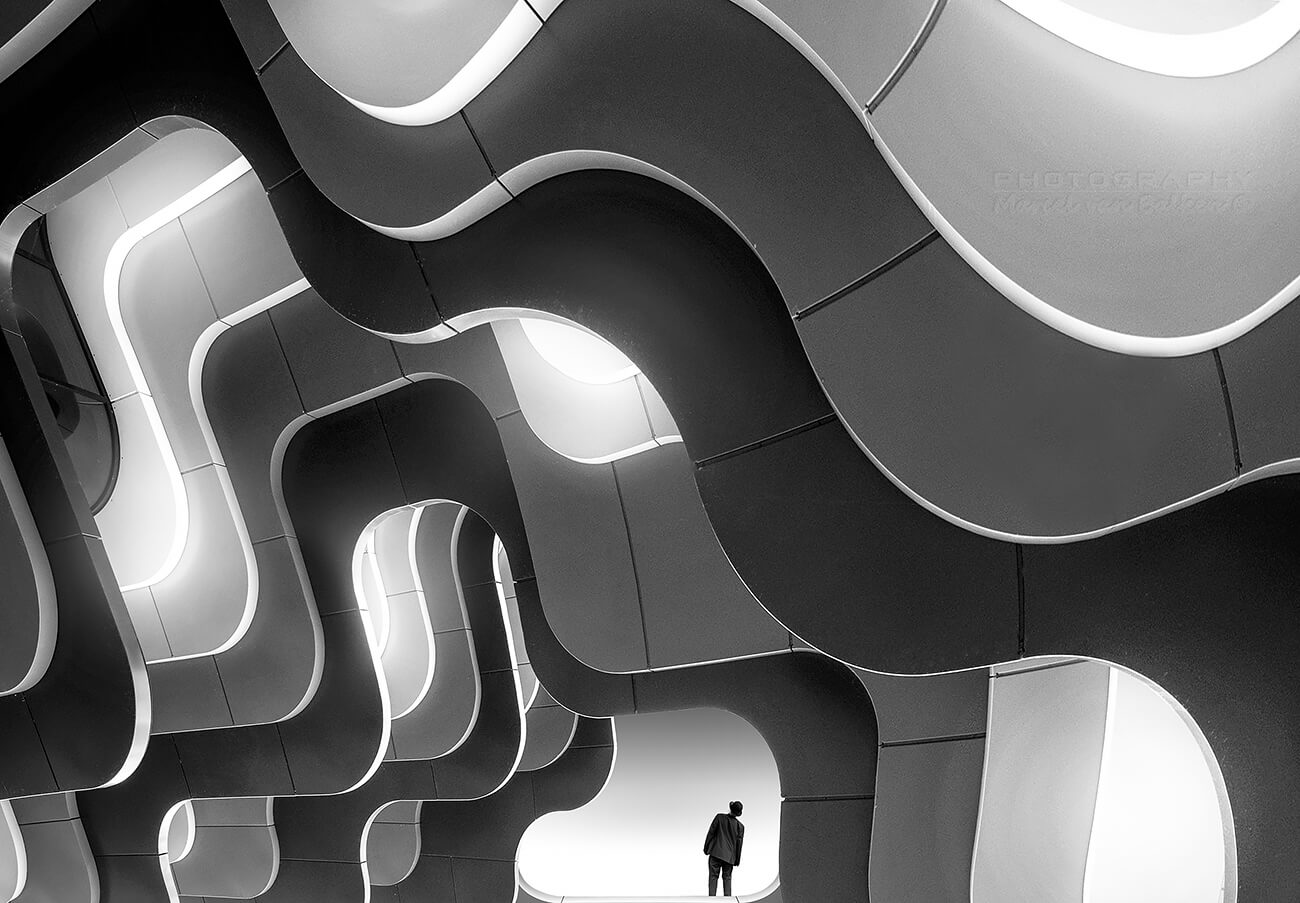
Curves from the series 'The insignificance of man' © Marcel van Balken
Fine art photography that explores the relationship between architecture and human presence. The photographs are carefully composed to highlight the unique features and intricate details of the buildings while also emphasizing their larger structural forms. The addition of man within these photographs reinforces the concept of man's insignificance in the face of monumental design, adding a layer of complexity and depth to the images. The play of light and shadow within each photograph creates a surrealistic atmosphere, highlighting the beauty and complexity of these structures while also conveying their intimidating and overpowering nature.
All about Marcel van Balken
Don Jacobson (United States)
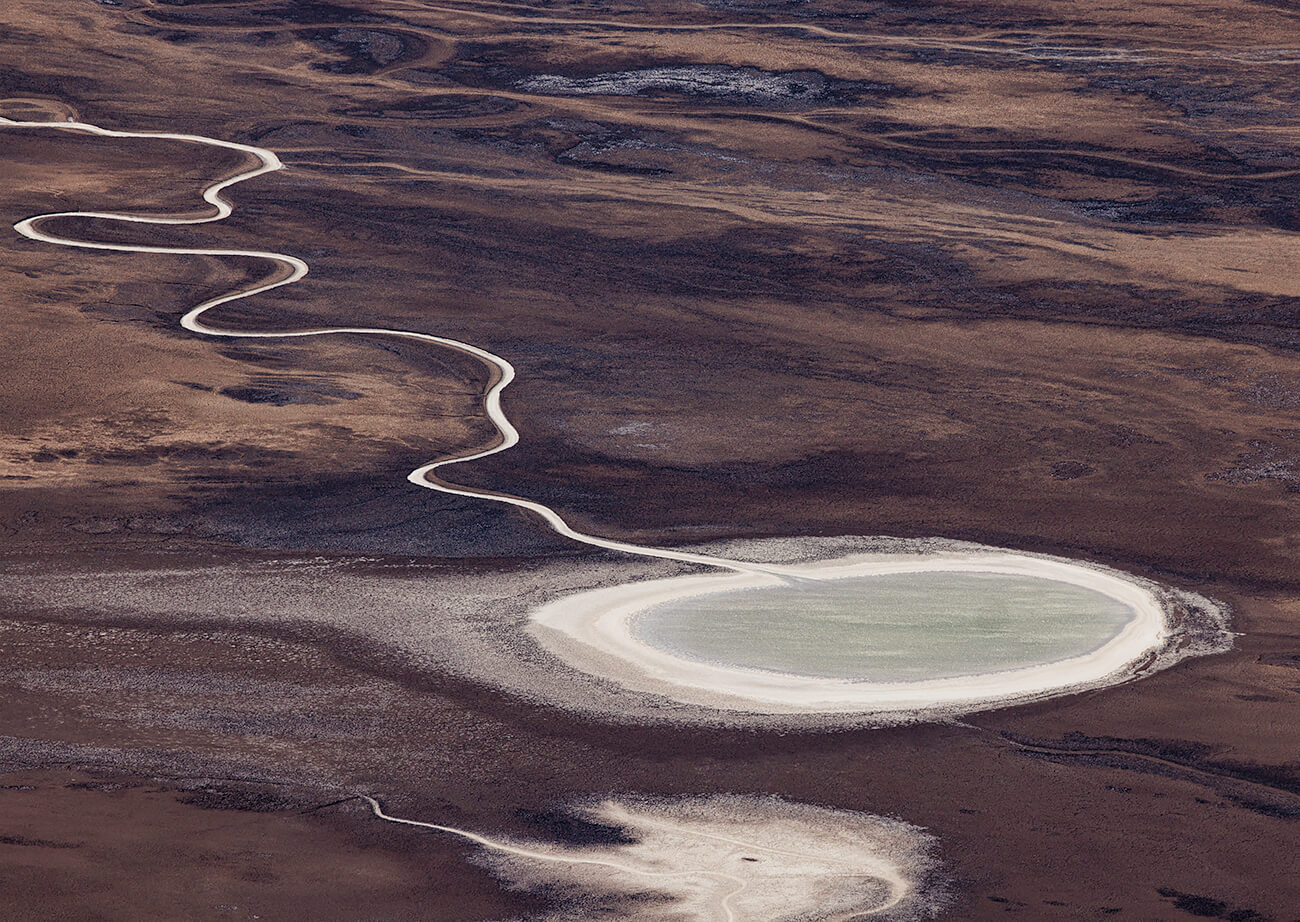
Sperm formation © Don Jacobson
I photograph things that are of interest to me that viewers of my photographs may not see or see in the way I do.
All about Don Jacobson
Nadide Goksun (United States)
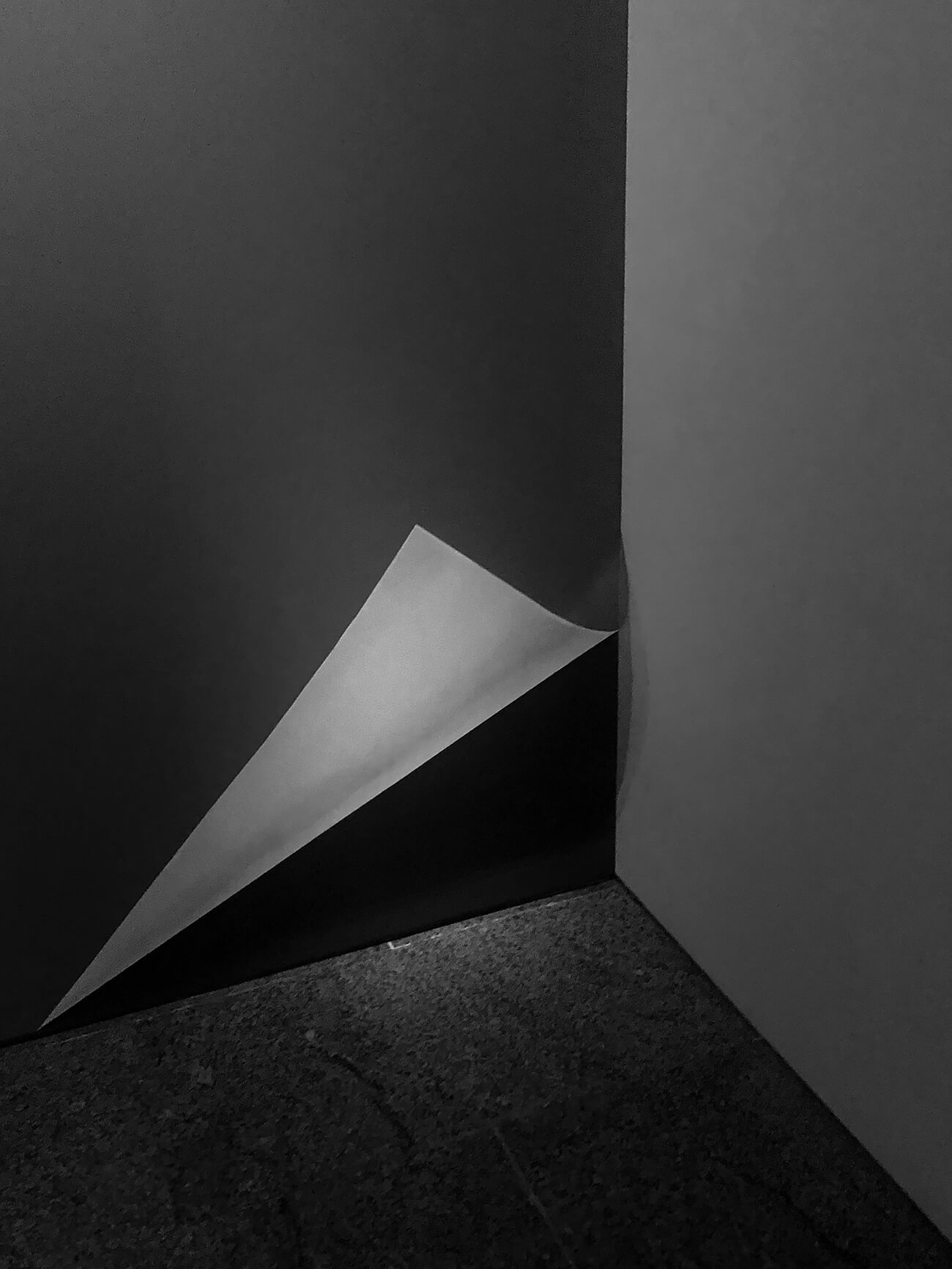
Untitled from the series 'Abstraction' © Nadide Goksun
This image is part of my continuing Abstraction series.
What initially drew me to this particular composition was the illusionary magic at play within the frame. At first glance, I found myself inexplicably drawn to the folded corner of what appeared to be a wallpaper, but in reality, it was a masterfully executed trompe-l'oeil painting.
In my ongoing Abstraction series, I embark on a visual exploration of the intriguing world of shapes and forms that often go unnoticed in our daily lives. This collection is a testament to the notion that art is not confined to the grand and ostentatious but can be found in the subtleties of the ordinary.
Within this series, I employ commonplace objects like kitchen utensils, paper tissues, fabrics, geometric forms, plants, and architectural details to create images that transcend their everyday associations. By manipulating natural and artificial light sources, I emphasize the interplay of light and shadow, transforming the familiar into the abstract.
Through these photographs, I aim to awaken viewers to the beauty concealed within the mundane. Abstraction invites individuals to reevaluate their surroundings, encouraging them to see, appreciate, and celebrate the often-overlooked artistry embedded in the seemingly trivial facets of daily life. It is a reminder that beauty is everywhere, awaiting discovery by those who are willing to explore beyond the surface.
Klaus Lenzen (Germany)
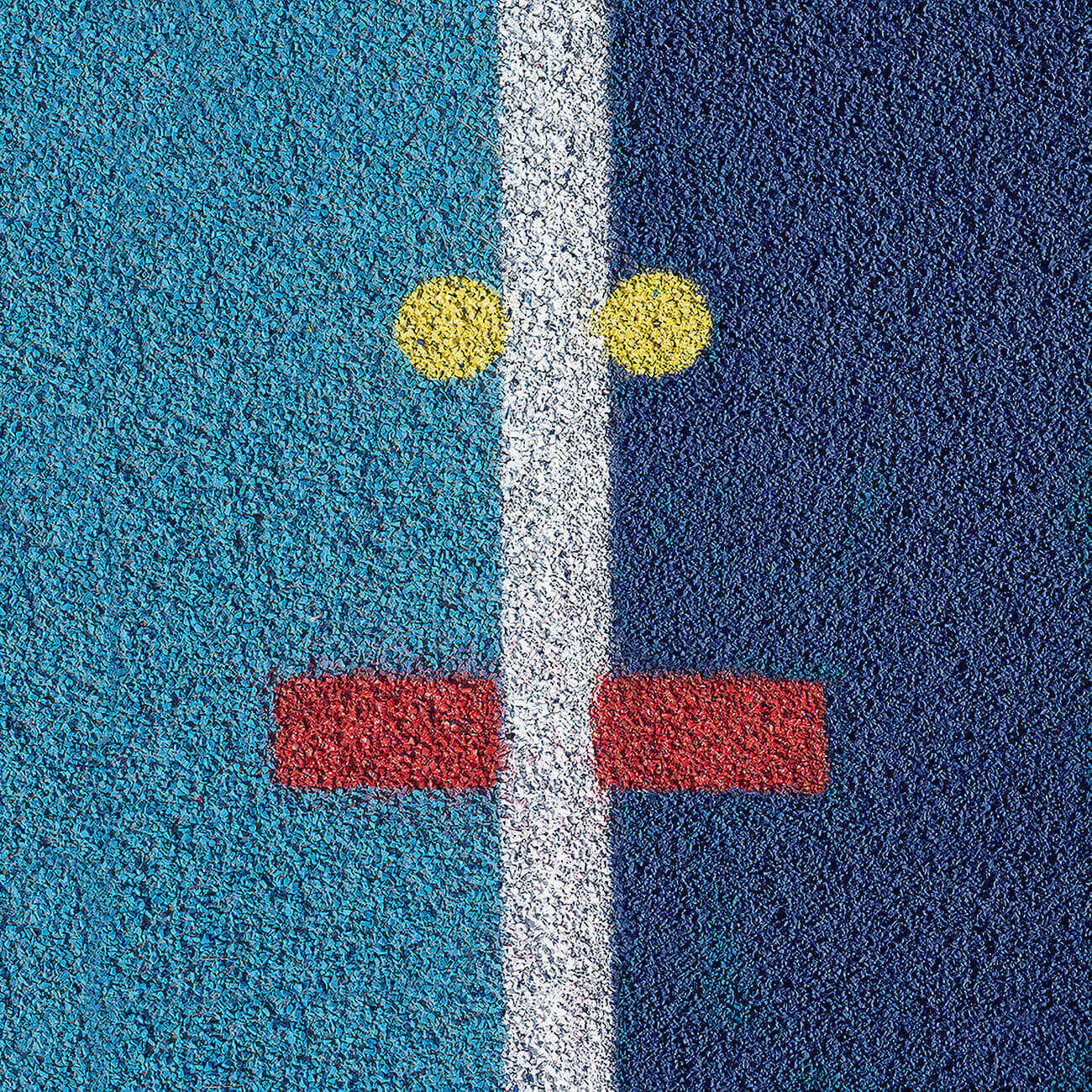
track and field IV © Klaus Lenzen
Athletics tracks usually have a brown-red background, but increasingly they are also made in blue, as is now the case in the stadium in my hometown of Ratingen near Düsseldorf (Germany). The colored track markings on the blue background offered many graphical elements, which I have captured in cut-outs.
All about Klaus Lenzen
Thomas Hofmann (Germany)
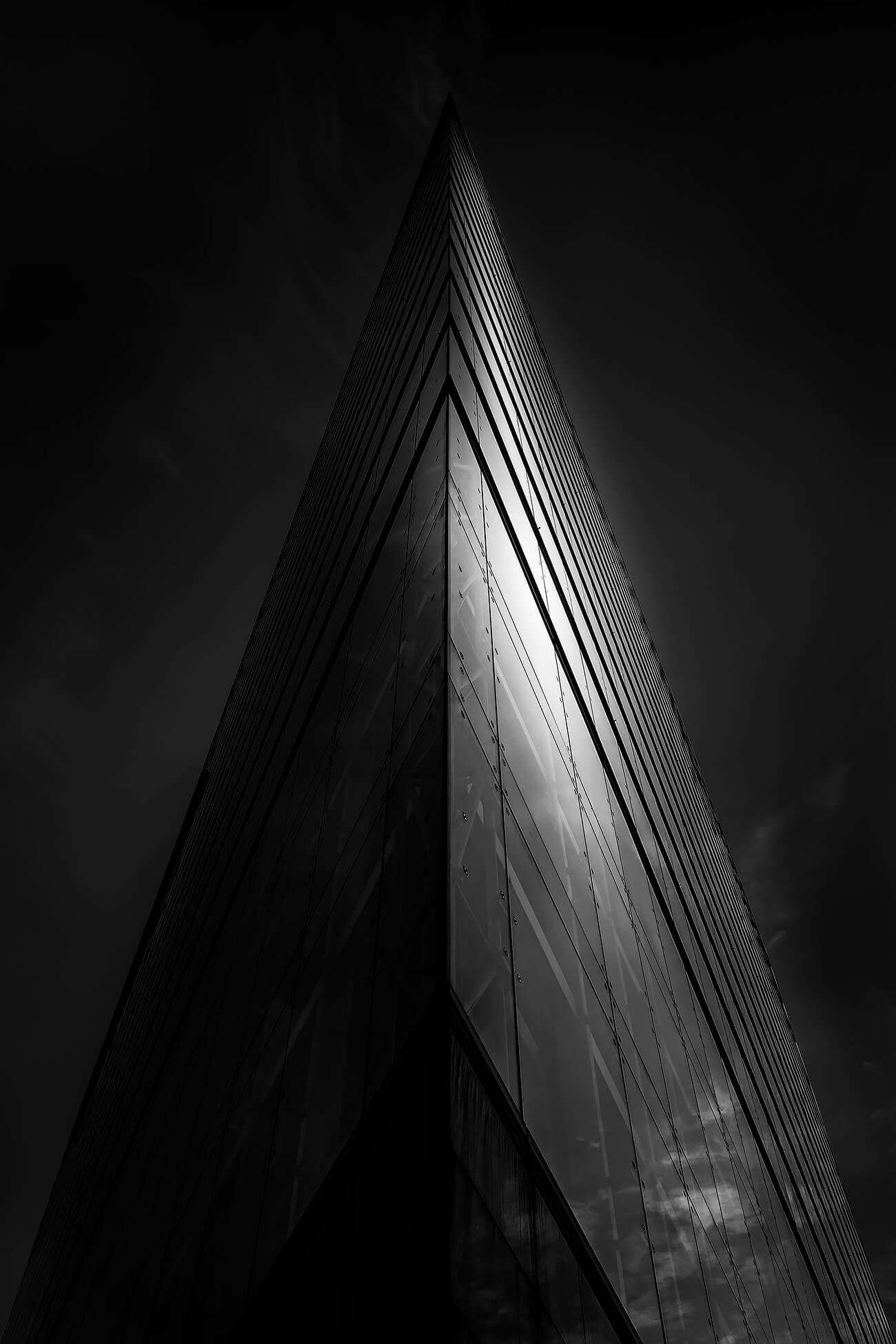
City Gate from the series Architectural Insights © Thomas Hofmann
The image shows the futuristic glass facade of the city gate in the city of Dusseldorf in Germany. I chose to render it in black and white and the upward angle of view to capture the crisp shapes and lines of the building in all their beauty and purity. The light coming in from the side impressively separates the two halves of the facade.
All about Thomas Hofmann
Lisa Thomas (United States)
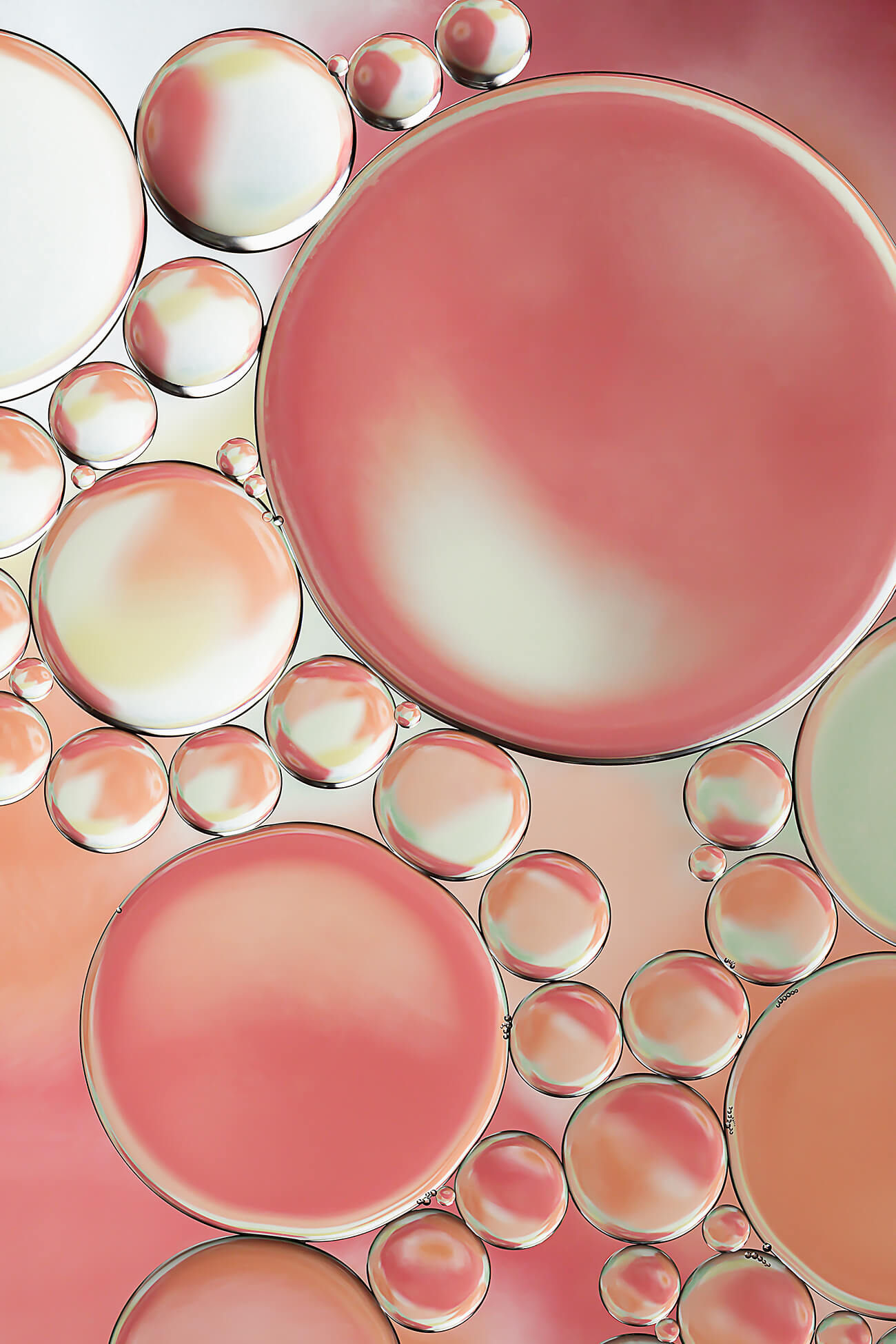
Blossoms 1 from the series Studies in Oil and Water © Lisa Thomas
Blossoms 1 is part of a series of macro photographs exploring the interplay of oil and water against diverse backdrops. This interaction of the materials with varied lighting creates mesmerizing shapes, textures, and patterns resulting in unique abstract images. Inspired by the hidden wonders of the every day, Blossoms 1 and the Studies in Oil and Water series capture moments of magic that might otherwise go unnoticed.
All about Lisa Thomas
Sander Vos (United Kingdom)
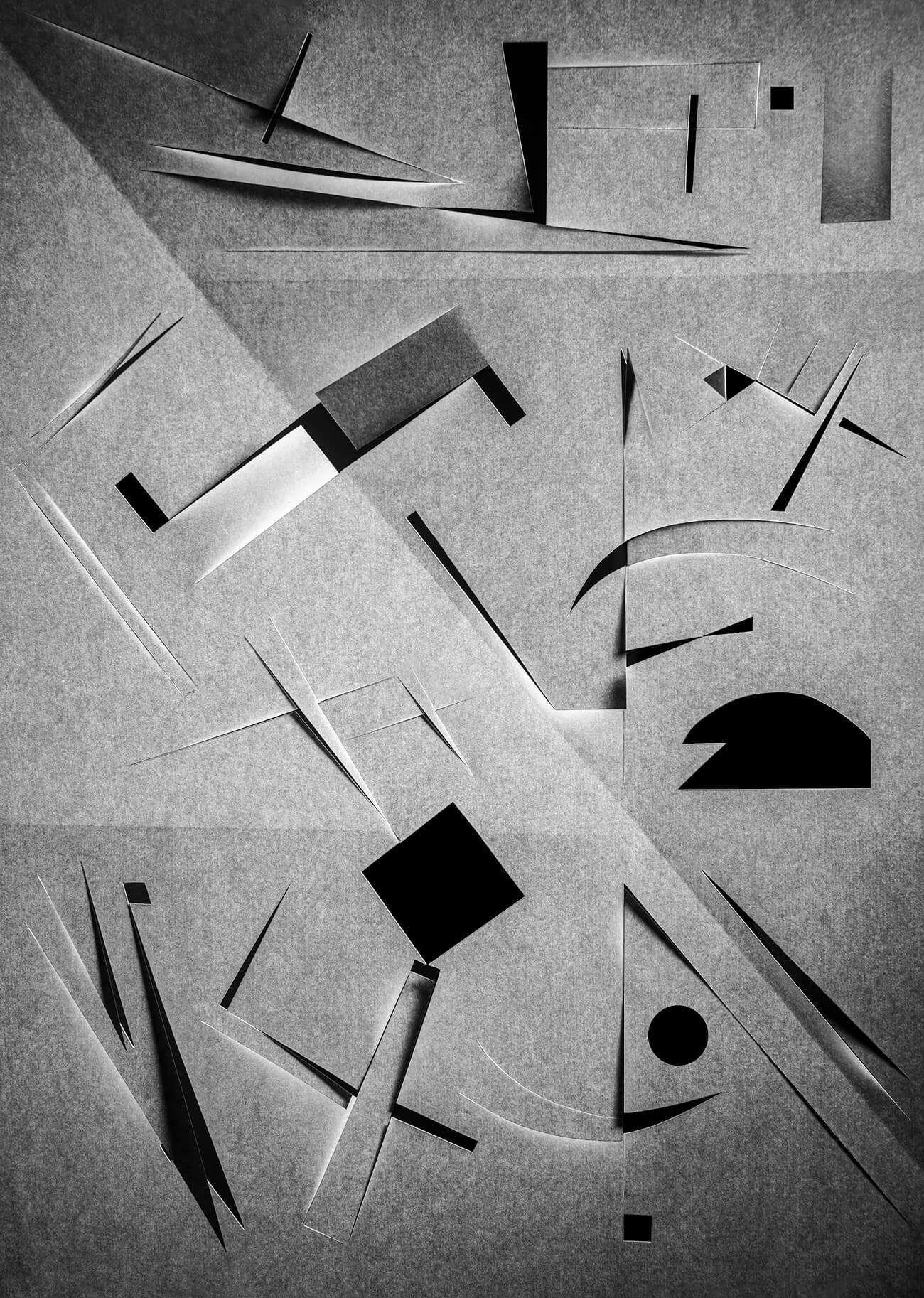
Abstrakt-Flow © Sander Vos
Miroslav Tichy said that photography is painting with light.
This notion led me to investigate the medium of photography in a more unorthodox way,
using light not just to enhance a composition but to form its essence.
The series “Abstrakt Flow'' transforms blank pieces of paper into graphic compositions through combining paper folding and cutting with studio photography.
All works were created in an intuitive way, just like the process of painting an abstract art piece.
With every shape, highlight and shadow serving as a force that interacts with another.
The results are a series of abstract compositions that were only visible for a brief moment, eternalized through the medium of photography.
Stuart Neil (Australia)
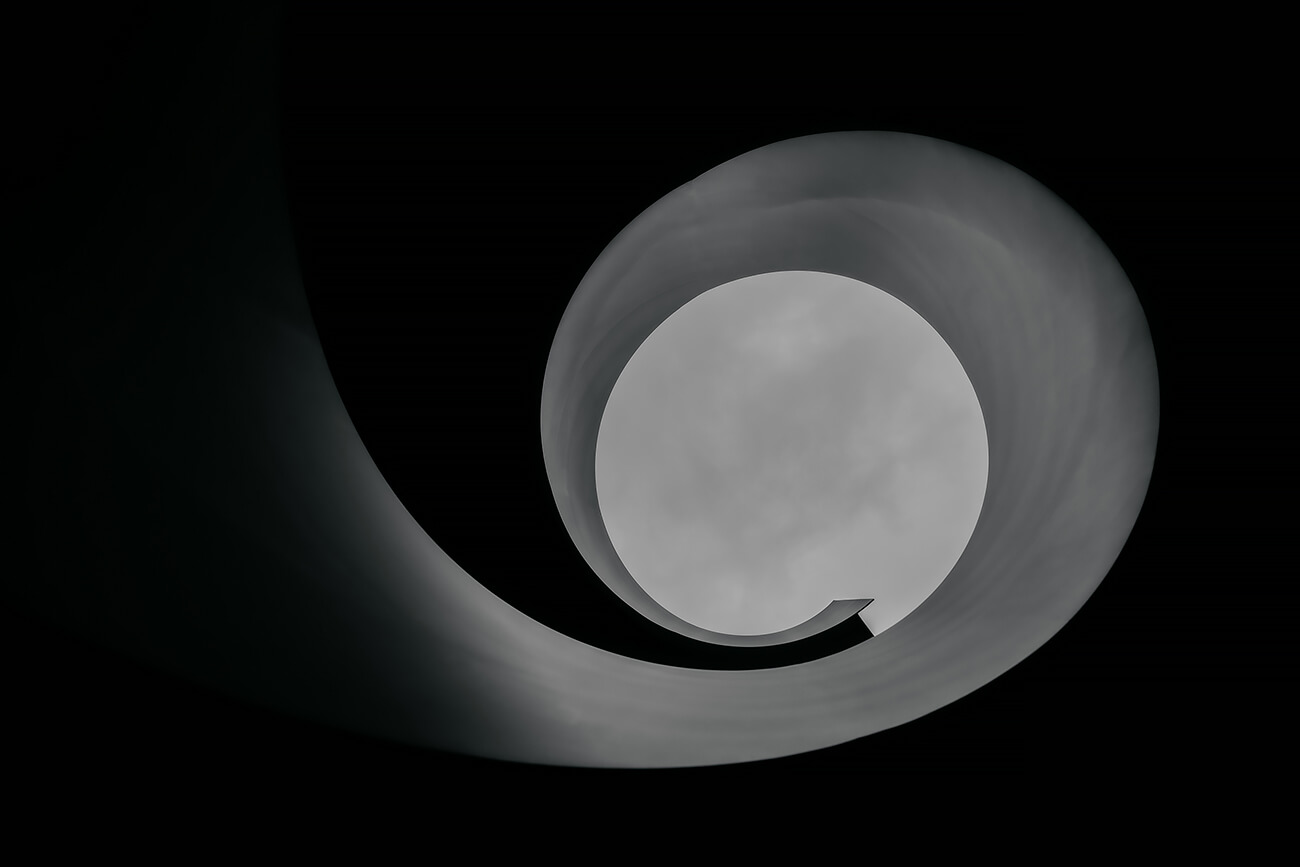
If Six Was Nine from the series 'Melbourne Mornings' © Stuart Neil
Taken during a series of morning Summer walks, “If Six Was Nine” (the Jimmy Hendrix song I was listening to at the time) was taken lying in a hotel foyer shooting up through a staircase – that is until I was thrown out by security.
All about Stuart Neil
Derrick Whaley (African-American)
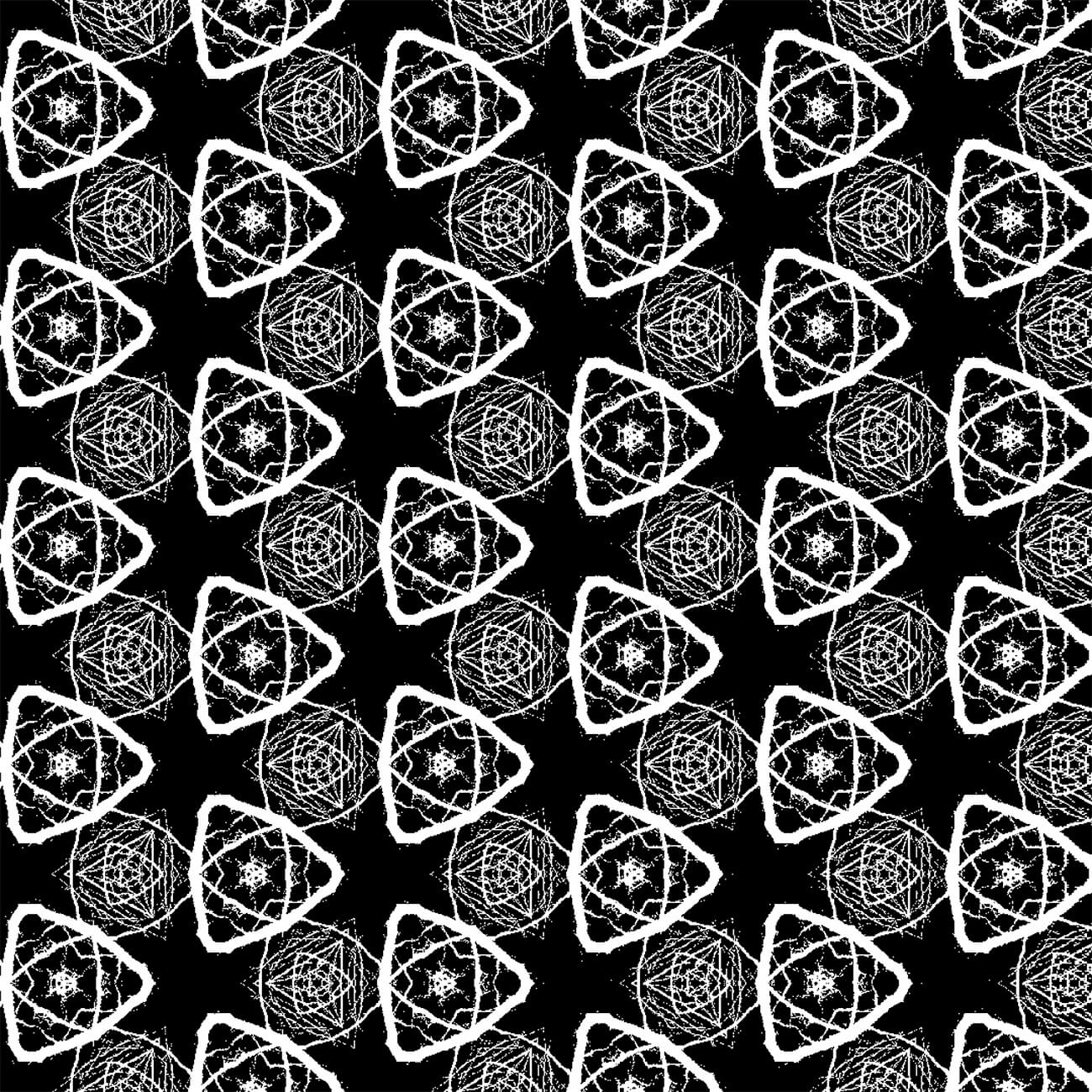
Shapes & Patterns: The Series © Derrick Whaley
Math is universal, math is a tool, what is what we use. In long term we also call it mathematics. Shapes are formed from many different sides and angles(math). Patterns are repeats or repetition in rows and columns (math).
All about Derrick Whaley
Junichi Wajda (Japan)
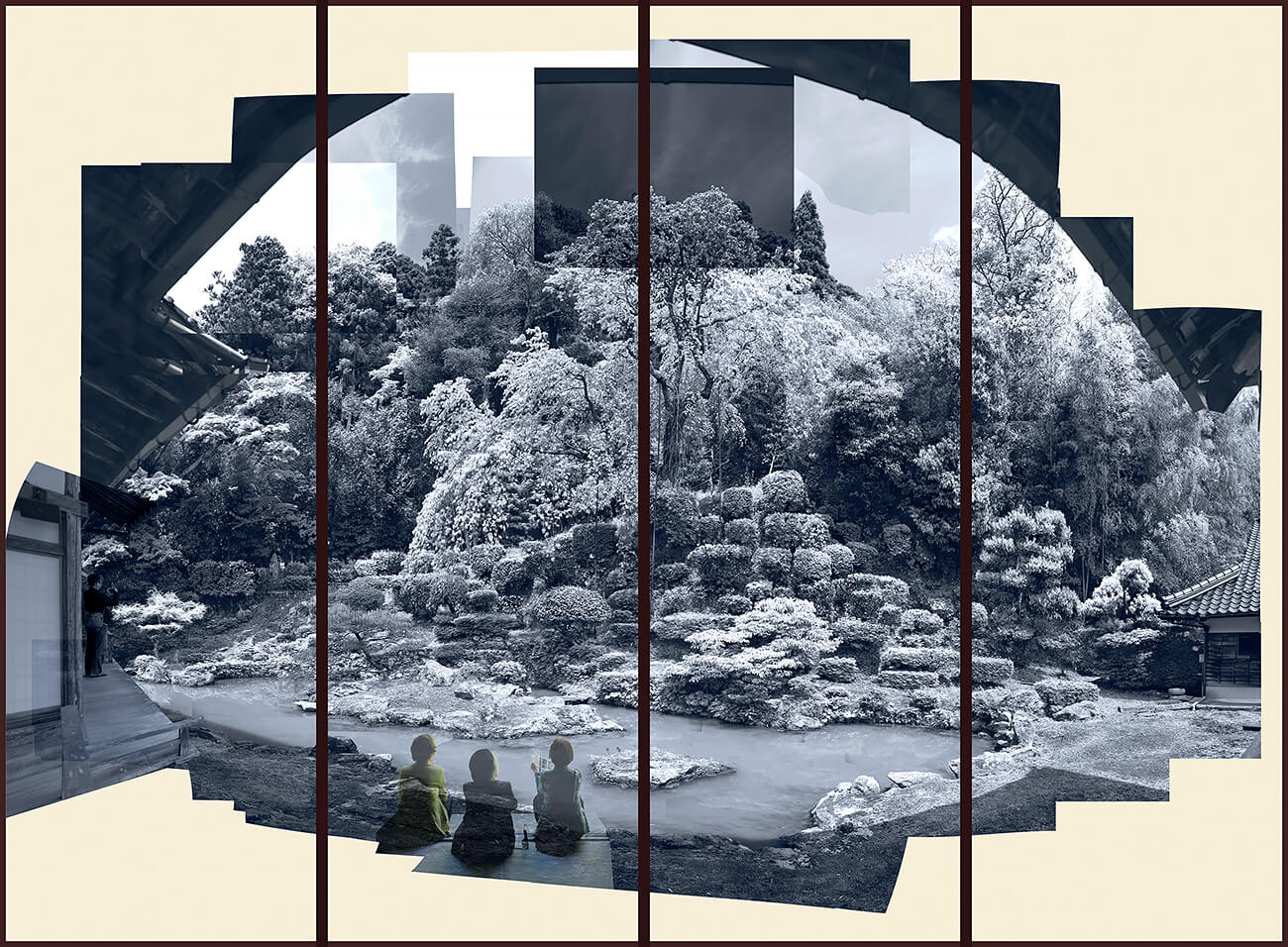
Ikoji Temple Sesshu Garden from the series 'The Creation of Place or Gardens of Sesshu' © Junichi Wajda
In Japan 600 years ago, a Zen monk named Sesshu pioneered the foundations of the traditional Japanese ink painting. Also, Sesshu's artistic legacy extends beyond ink onto the canvas of gardens. In his gardens, there is a powerful hidden vector that guides the observer's gaze. By tracing this vector, each viewer's perception takes shape. I endeavored to approach Sesshu's aspiration for diversity and coexistence by combining hundreds of photos that captured the guided movement of sight through the camera, creating a multi-perspective view rather than one.
All about Junichi Wajda
Matt Coughlin (United States)
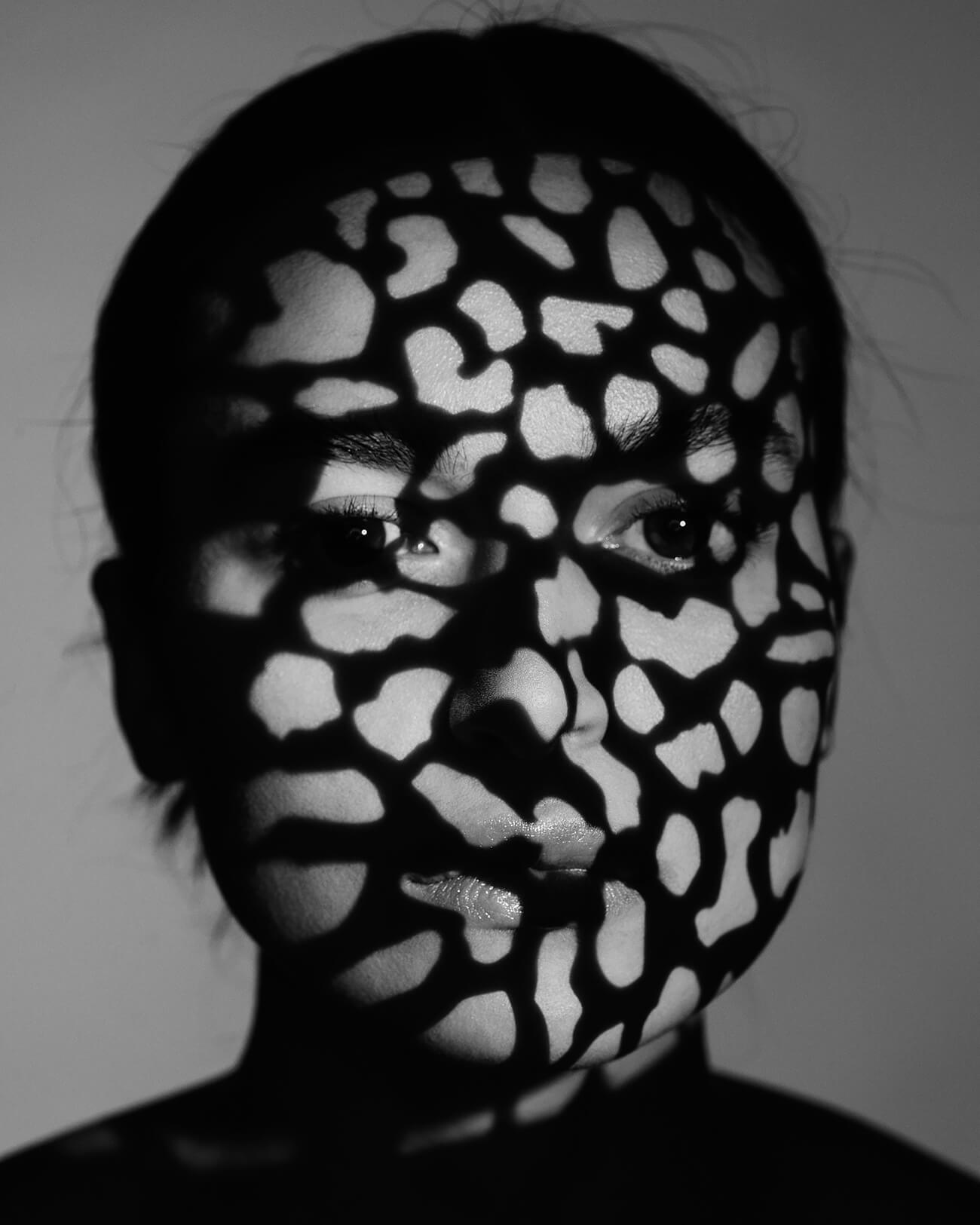
Pieces from the series Shapes of Light © Matt Coughlin
The Shapes of Light series explores geometric shapes and patterns of light as they fall on the human face.
All about Matt Coughlin
Walter Colley (United States)
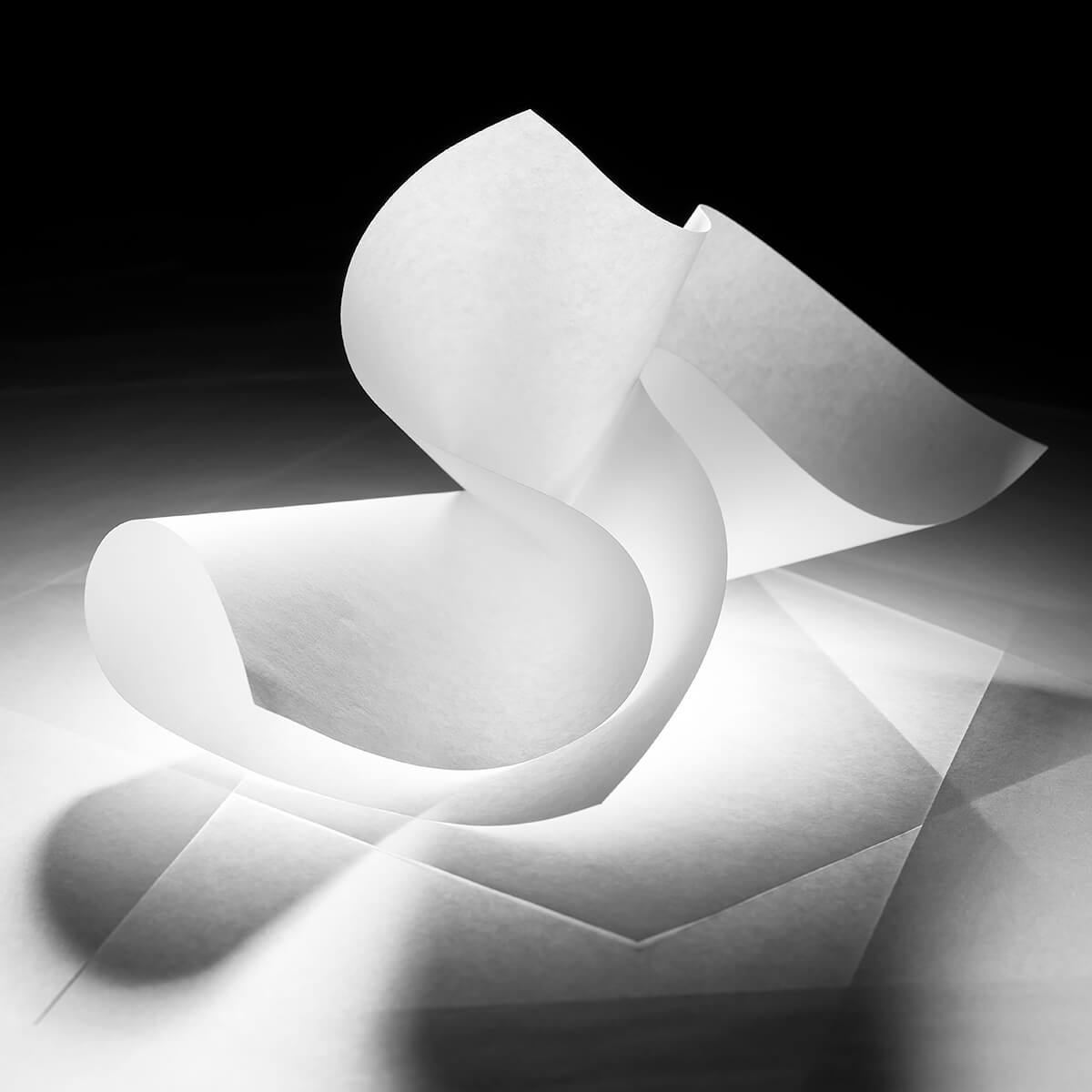
Just Paper #6 © Walter Colley
